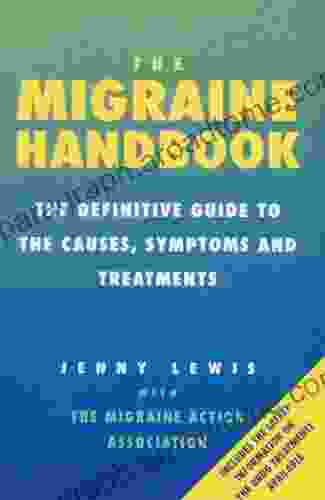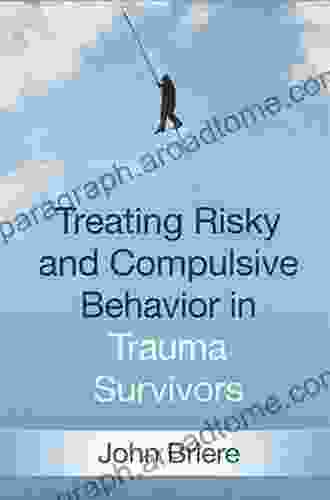Treating Risky And Compulsive Behavior In Trauma Survivors: A Comprehensive Guide

4.6 out of 5
| Language | : | English |
| File size | : | 4110 KB |
| Text-to-Speech | : | Enabled |
| Enhanced typesetting | : | Enabled |
| Word Wise | : | Enabled |
| Print length | : | 230 pages |
| Screen Reader | : | Supported |
Trauma is a major public health problem, affecting millions of people worldwide. It can have a devastating impact on a person's physical, emotional, and mental health. One of the most common symptoms of trauma is risky and compulsive behavior.
Risky and compulsive behavior can take many forms, including:
- Substance abuse
- Gambling
- Self-harm
- Eating disFree Downloads
- Sexual promiscuity
- Compulsive spending
These behaviors can be extremely harmful, and they can lead to serious consequences, such as:
- Physical injury
- Death
- Financial ruin
- Social isolation
- Mental health problems
If you are a trauma survivor who is struggling with risky and compulsive behavior, it is important to seek help. There are a number of effective treatments available that can help you to manage your symptoms and live a healthier life.
Treatment for Risky And Compulsive Behavior
The treatment for risky and compulsive behavior in trauma survivors typically involves a combination of psychotherapy and medication. Psychotherapy can help you to understand the underlying causes of your behavior and develop healthier coping mechanisms. Medication can help to reduce your symptoms and make it easier to participate in therapy.
There are a number of different types of psychotherapy that can be effective for treating risky and compulsive behavior in trauma survivors. Some of the most common types include:
- Cognitive-behavioral therapy (CBT) helps you to identify and change the negative thoughts and behaviors that contribute to your risky and compulsive behavior.
- Dialectical behavior therapy (DBT) teaches you skills for managing your emotions, regulating your behavior, and improving your relationships.
- Eye movement desensitization and reprocessing (EMDR) is a type of therapy that helps you to process traumatic memories and reduce the symptoms of PTSD.
- Trauma-focused therapy helps you to understand the impact of trauma on your life and develop healthier coping mechanisms.
Medication can also be helpful for treating risky and compulsive behavior in trauma survivors. Some of the most commonly used medications include:
- Antidepressants can help to improve your mood and reduce your symptoms of anxiety and depression.
- Antipsychotics can help to reduce your symptoms of psychosis and hallucinations.
- Mood stabilizers can help to stabilize your mood and reduce your symptoms of mania and depression.
The treatment for risky and compulsive behavior in trauma survivors is typically individualized, and it will vary depending on your specific needs. It is important to work with a qualified mental health professional to develop a treatment plan that is right for you.
Recovery from Risky And Compulsive Behavior
Recovery from risky and compulsive behavior is a journey, and it takes time and effort. There will be setbacks along the way, but it is important to remember that recovery is possible. With the right treatment and support, you can learn to manage your symptoms and live a healthy, fulfilling life.
Here are some tips for recovering from risky and compulsive behavior:
- Seek professional help. The first step to recovery is to seek professional help. A qualified mental health professional can help you to identify the underlying causes of your behavior and develop healthier coping mechanisms.
- Join a support group. Support groups can provide you with a safe and supportive environment to share your experiences and learn from others who are also recovering from risky and compulsive behavior.
- Practice self-care. Self-care is essential for recovery. Make sure you are getting enough sleep, eating healthy foods, and exercising regularly.
- Avoid triggers. Triggers are things that can cause you to relapse into risky and compulsive behavior. Identify your triggers and develop strategies for avoiding them.
- Be patient. Recovery takes time. Don't get discouraged if you have setbacks along the way. Just keep working at it, and you will eventually reach your goals.
Recovery from risky and compulsive behavior is possible. With the right treatment and support, you can learn to manage your symptoms and live a healthy, fulfilling life.
Risky and compulsive behavior is a serious problem that can have a devastating impact on the lives of trauma survivors. However, there is hope. With the right treatment and support, you can learn to manage your symptoms and live a healthy, fulfilling life.
If you are a trauma survivor who is struggling with risky and compulsive behavior, please seek help. There are a number of effective treatments available that can help you to recover from your trauma and live a healthier life.
4.6 out of 5
| Language | : | English |
| File size | : | 4110 KB |
| Text-to-Speech | : | Enabled |
| Enhanced typesetting | : | Enabled |
| Word Wise | : | Enabled |
| Print length | : | 230 pages |
| Screen Reader | : | Supported |
Do you want to contribute by writing guest posts on this blog?
Please contact us and send us a resume of previous articles that you have written.
 Book
Book Novel
Novel Page
Page Chapter
Chapter Text
Text Story
Story Genre
Genre Reader
Reader Library
Library Paperback
Paperback E-book
E-book Magazine
Magazine Newspaper
Newspaper Paragraph
Paragraph Sentence
Sentence Bookmark
Bookmark Shelf
Shelf Glossary
Glossary Bibliography
Bibliography Foreword
Foreword Preface
Preface Synopsis
Synopsis Annotation
Annotation Footnote
Footnote Manuscript
Manuscript Scroll
Scroll Codex
Codex Tome
Tome Bestseller
Bestseller Classics
Classics Library card
Library card Narrative
Narrative Biography
Biography Autobiography
Autobiography Memoir
Memoir Reference
Reference Encyclopedia
Encyclopedia Sprachen Lernen Mal Anders
Sprachen Lernen Mal Anders Jessica Butts
Jessica Butts Jyoti Rajan Gopal
Jyoti Rajan Gopal Joe Hagan
Joe Hagan Marie Luise Von Franz
Marie Luise Von Franz Jim Hoerricks
Jim Hoerricks Joan E Ruffins
Joan E Ruffins Pamela Constable
Pamela Constable Theresa Levitt
Theresa Levitt Jisun Sunny Fisher
Jisun Sunny Fisher Minke De Vos
Minke De Vos Joel L Parkyn
Joel L Parkyn William N Goldstein
William N Goldstein Jim Cox
Jim Cox Robert Frenay
Robert Frenay Thomas P Curran
Thomas P Curran Scott Gooding
Scott Gooding Suzette Brown
Suzette Brown Jerry L Wyckoff
Jerry L Wyckoff John Gravett
John Gravett
Light bulbAdvertise smarter! Our strategic ad space ensures maximum exposure. Reserve your spot today!

 Josh CarterThe Definitive Guide to the Causes, Symptoms, and Treatments of Common Health...
Josh CarterThe Definitive Guide to the Causes, Symptoms, and Treatments of Common Health...
 Pablo NerudaTwo Women, Three Flamingos, and a Pooch Print Operas BW: A Journey into the...
Pablo NerudaTwo Women, Three Flamingos, and a Pooch Print Operas BW: A Journey into the... George MartinFollow ·2.7k
George MartinFollow ·2.7k Gerald BellFollow ·9k
Gerald BellFollow ·9k Javier BellFollow ·15.9k
Javier BellFollow ·15.9k Quincy WardFollow ·15k
Quincy WardFollow ·15k Miguel NelsonFollow ·9.6k
Miguel NelsonFollow ·9.6k Chadwick PowellFollow ·19.5k
Chadwick PowellFollow ·19.5k Dwight BellFollow ·2.5k
Dwight BellFollow ·2.5k Spencer PowellFollow ·9.9k
Spencer PowellFollow ·9.9k

 Julio Cortázar
Julio CortázarAn Illustrated Encyclopedia Of Live Concerts And...
Immerse yourself in the...

 Edgar Cox
Edgar CoxNon Physically Assaultive Attachment Based Chronic Covert...
What is Covert...

 Robert Reed
Robert ReedThe Baseball of Why: Unraveling the Intricacies of...
Step up to the plate and...

 Aldous Huxley
Aldous HuxleyTacos and Beer: An Atmosphere of Flavorful Delights
In the realm of culinary adventures,...

 Stan Ward
Stan WardUnlock the Secrets of the Aramaic Jesus: Revelations of a...
Journey Back to the Roots of...

 Vincent Mitchell
Vincent MitchellMillionaire Success Strategies: Your Blueprint for...
Unlock the...
4.6 out of 5
| Language | : | English |
| File size | : | 4110 KB |
| Text-to-Speech | : | Enabled |
| Enhanced typesetting | : | Enabled |
| Word Wise | : | Enabled |
| Print length | : | 230 pages |
| Screen Reader | : | Supported |








